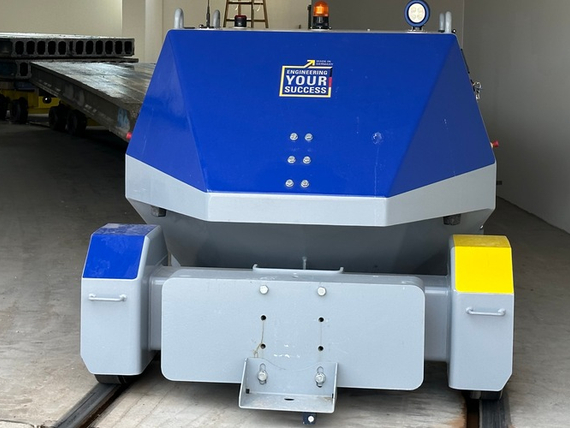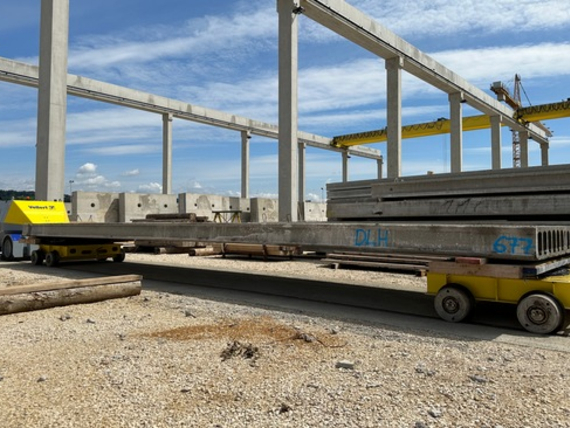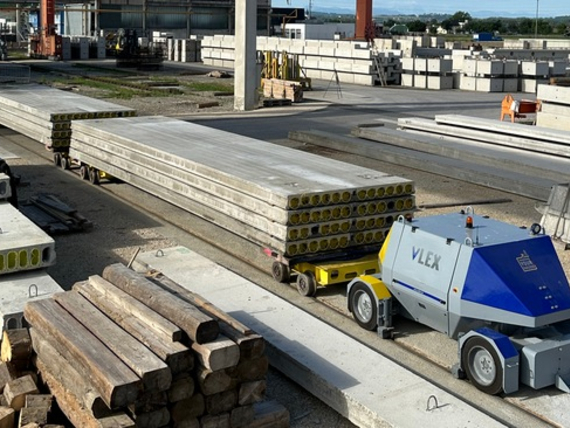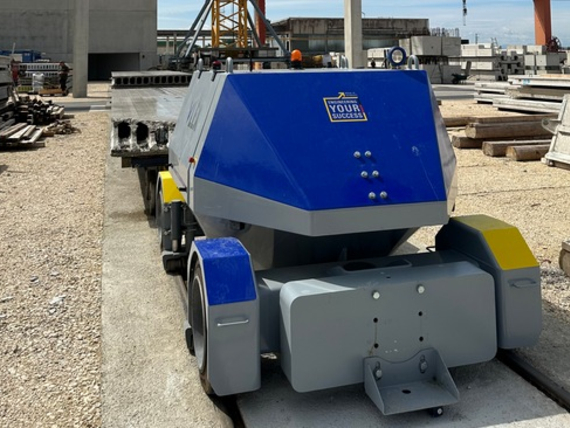It only took 11 months for a new highly automated hollow-core slab production line to be installed at the Perg factory site in Upper Austria. HABAU Hoch- und Tiefbaugesellschaft m.b.H. is reacting to the large number of its own building projects with expansion of its capacities from the current 70 - 80,000 sqm to approx. 100,000 sqm. “The new plant technology is keeping us competitive on the market for prefabricated parts in the long run,” said Manfred Karl, Business Area Manager at the HABAU prefabricated parts factory, at the festive inauguration on June 14th, 2023.
Sustainability as the most important factor
“The floor slabs prefabricated here are used in particular in industrial and commercial construction. They represent a manufacturing procedure that produces much less CO2 since optimized cross-sections lower the concrete volume required,” explains Christoph Haider, Head of the Prefabricated parts planning group at HABAU. Sustainability and flexible, emission-free processes are at the focus for removal of the prefabricated hollow-core slabs into the newly created outdoor storage area of 7,500 sqm as well.
Once pre-produced, the slabs need to be provided for loading to be transported to the next construction sites as quickly as possible, so as not to block the other production processes. “One special challenge was that the 200-m-long rail-bound removal path needed a curve with an inner radius of 20 m up to the loading points,” Markus Schenk, Senior Sales Manager at Vollert, says.
Road-rail vehicle for removal of honeycomb ceilings for loading
This is why the engineers at Vollert rely on a VLEX 20 road-rail robot. “This solution offers an interesting alternative to the common, conventional removal transport cars,” says Markus Schenk. The maneuverable shunting solution for rail and road is not only able to move heavy parts but can also perform other transport tasks in the operation away from the rail track. A strictly rail-bound solution with trailing cars was developed to implement curves with the up to 20-m-long and 2.4-m-wide floor stacks. “A total of four trailing cars are flexibly connected by coupling rods to transport the floor stacks with dead weights of up to 60 t,” explains Christian Langner, Project Manager at Vollert. The trailing cars, moving on four wheels each, are equipped with bogies on which the floor stacks are placed to compensate for curves. Once they have reached the loading area, three gantry cranes will pick up the stacks directly from the trailing cars to provide them for transport to the next construction sites.
The road-rail robot is operated using a radio remote control with joystick. The technology is battery-operated, which makes it emission-free. The VLEX 20 can move the floor stacks easily: at a traction capacity of more than 20 kN and a dead weight of 5 t, the road-rail robot is suitable for heavy loads with weights of up to 300 t. Its sophisticated vehicle geometry with articulated steering and its four individually controlled wheel hub motors ensure a particularly agile and economical switch from rail to road. Hydraulically lowering tracking rollers for rail operation and a floating axle warrant continuous ground and rail contact of all four wheels no matter the ground conditions.
From the pilot phase to productive operation
“Initial pilot operation is nearly complete,” Manfred Reiter, Project Officer at HABAU, explains. “We are now starting productive operation. Our initial experience with loading processes using the VLEX are very positive.” HABAU GROUP shows strong commitment to sustainable growth and CO2-reduced builds even in pre-production not only with its plant expansion this way.




